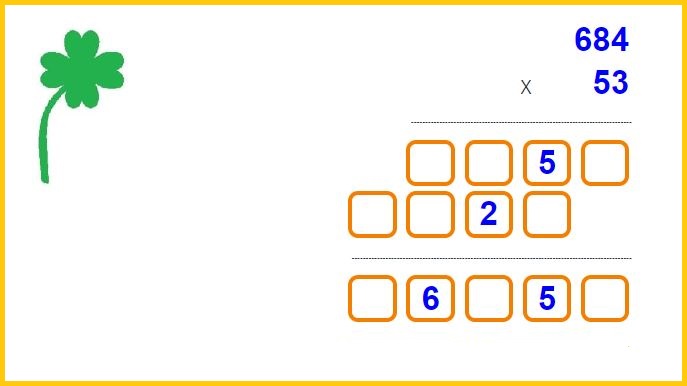When looking for the Best Pets For Toddlers, it’s important to understand exactly how to take care of them, just as you would with any other creature.
The top eight small pets, according to a 2011–2012 poll by the American Pet Products Association, are rabbits, hamsters, guinea pigs, mice/rats, gerbils, chinchillas, and ferrets. Here is a brief recap of each species’ potential as family pets.
Before we look at the benefits and drawbacks of the most common small pets for youngsters, let us issue a word of warning. Never purchase a pet on a whim. You must be ready and certain even if your youngster has been beseeching, imploring, and giving you the puppy dog eyes.
Children differ in their frame of reference and might be unpredictable. As a result, you should be assured that you are willing to take care of the pet or manage responsibility for it. This involves making sure you have a strict budget and are aware of how much a pet will cost you.
Table of Content:
- Ensure Your Children’s Support for the Pet Type and Work Involved
- What are the Best Pets For Toddlers (Ages 4-7):
- What are the Best Pets For Toddlers/Pets That like to Cuddle-:
- Cage pets for kids
- FAQs
Ensure Your Children’s Support for the Pet Type and Work Involved:
Everyone in the family needs to be on the same page when deciding which Best Pets For Toddlers. The entire family must be eager to contribute actively to the pet’s care.
And most essential, whatsoever pet you choose to get, you need to feel at ease with it. Therefore, even if the kids have their hearts set on one, snakes are generally not the best pets for your family if you are utterly terrified of them.
As soon as you get your new pet home, you should schedule a visit with your veterinarian so they can examine your pet and make recommendations for how to best care for them.
Caring for the Best Pets For Toddlers:
For kids, taking care of Cuddly pets can be rewarding. Companionship, entertainment, and educational opportunities can all be obtained from pets. But keep in mind that having a pet is a major commitment.
Pets are living things that require ongoing maintenance and care. They require constant financial investment to maintain.
Pets may teach us important lessons about responsibility, selflessness, and moderation. Some pets may require adult supervision when being handled by children.
What are the Best Pets For Toddlers (Ages 4-7):
Remember that every person you welcome into your home has different requirements and qualities.
When choosing the best bets for toddlers, these are the most crucial considerations to make:
- The length of its life.
- How much space do you have?
- Are there any members of the family who are allergic to things, like hay?
- What amount of time do you all think you can devote?
- What does your child desire in a pet (for instance, if they want something cuddly, they won’t be pleased with a fish)?
9 Best Pets For Toddlers:
1. Chickens:
2. Leopard Geckos
3. Birds
4. Cat
5. Brine shrimp
6. Fish for Toddlers Pet:
7. Sea Monkeys
8. Parakeet
9. Chameleon
1. Chickens:
You can show your kids the ins and outs of pet ownership by showing them how to raise a chicken. Having a henhouse in the backyard is the best method to teach kids where their eggs originate from. If your city permits it, chickens are intelligent animals that can be trained to come when called. To keep warm, chickens must be kept inside (or in a heated henhouse) in colder locations; this is something to keep in mind.
Kids can easily handle these peaceful reptiles, and they make entertaining pets. Since they are nocturnal, the night is when they are most active. They are simple to care for because they don’t climb walls like other types of geckos and they don’t need a moist atmosphere.
3. Birds:
Birds make wonderful pets. However, taking care of a bird requires more effort than taking care of a tortoise or a fish. There are some intelligent birds. Many people are gregarious. Every bird needs care practically every day.
Zebra Finch: is a lively bird that appears to move around his cage at an unnervingly rapid pace. If you acquire a pair, you can impart to your children some important life skills about parenting children.
We advise you to look at lesser breeds of parrots, such as budgies or canaries. Just be cautious to investigate your options before choosing a bird!
Truthfully, birds are more likely to sing in households with kids than in those without. Why? Considering that birds are gregarious creatures and enjoy blending in. Particularly parrots want a lot of engagement.
Birds are not only colorful and pleasing to the eye, but their melodies also uplift the home. Here are some pros and cons of Best Pets For Toddlers are:
Advantages:
- Birds are the ideal companion for children who appreciate viewing animals from a distance but do not like to personally interact with them.
- Children may find the melodious sounds of birds to be fascinating, and as most birds are not aggressive, they can live peacefully in cages.
Disadvantages:
- It takes time and patience to handle and train a bird, so it’s crucial that your child has both.
- Cleaning a bird’s cage can be a laborious process because birds can leave their cages rather messy.
4. Cat:
Known for their independence, cats require slightly less upkeep and devotion than dogs. Cats also need routine veterinary exams and vaccinations, just like dogs do.
It’s crucial to pick a cat that is safe to have near kids. In the event that your family has a small home, a cat can be a better option than a dog.
Maine Coon Cat-With a weight of over 12 pounds, the Maine Coon is a giant of a cat. She will be a fun playmate for kids of all ages because of that and her powerful build.
The Ragdoll cat is one of the cutest & best pets for toddlers you’ll ever see. She is known as the “quiet one” for her cool demeanor.
Russian Blue Cat: The Russian Blue’s look tells you everything you need to know about the characteristics of this cat. She is so laid-back and understanding that you probably wish your children could take a cue from her.
Cats can easily fit in with the rest of the family and are adorable. Here are some pros and cons of Best Pets For Toddlers are:
Advantages:
- Even while cats aren’t as lively as dogs, they nonetheless make terrific pets for kids.
- Cats rarely need upkeep because they typically look after themselves.
Disadvantages:
- Cats are independent creatures that occasionally stray from their owners, unlike dogs that are constantly devoted to them.
- Additionally, your youngster is more likely to develop allergies to cats than to dogs.
- Cats can counterattack if disturbed and are irritable and defensive.
5. Brine shrimp:
Brine shrimp also referred to as “sea monkeys,” are tiny crustaceans that are practically perfect beginner pets that even young children can appreciate. They are offered in kits. Children may witness these little shrimp emerge, become active, and grow by simply adding water.
6. Best Fish for Toddlers Pet:
Fish are perhaps the best pet for toddlers and young kids because they can be kept in a variety of easy to complex ways. You may start small and build up your aquarium or pond into a dynamic colony of creatures, inspiring a lifetime love of fish.
Cost: Depending on the type, quantity, and other materials needed, owning fish can be very expensive. Fish from colder waters are more affordable and best for families. They may be the least expensive pets.
Fish may beautify your home because they are mellow and tranquil. Here are some pros and cons of Best Pets For Toddlers are:
Advantages:
- Some kids prefer calmer pets so they can quietly study them.
- One of the best pets for young children is a fish because all it needs is clean water and food given at regular intervals.
- Your toddler may be fascinated and amused by some colorful fish.
Disadvantages:
- You must be certain that your fish are receiving the proper nutrition, and feeding them in the appropriate amounts is essential.
- To avoid the accumulation of garbage and bacteria, the container or tank must occasionally be cleaned.
7. Sea Monkeys:
Some people may find this to be a bit too low-maintenance, but if you want to start out small, sea monkeys can make the best pets for toddlers. Children between the ages of 2 and 5 will enjoy seeing these creatures, although without quite as much fuss.
Sea monkeys only need to be fed every 5 to 7 days, and you can cut back on the amount of food you give them if the water becomes too cloudy. The optimal longevity for young children who desire a pet but don’t fully understand what having a pet entails is two years, which is how long sea monkeys live.
8. Parakeet:
One of the friendliest birds you’ll ever encounter is definitely a parakeet. He is the perfect playmate for your kids because of his upbeat disposition and extroverted temperament. He’s chatty, but he’s also lively and eager. We must also take care of this man. Even your kids can make him like being touched, especially if there are treats involved.
9. Chameleon:

An ideal starter reptile is a chameleon or anole. They are easy to raise and little. For them to remain healthy and in their cage, the arrangement of the cage is crucial. For a reptile of their size, these creatures are resilient. The drawback is that they require live food, which comes with obligations. They are not venomous, making them a potential pet for younger children.
What are the Best Pets For Toddlers/Pets That like to Cuddle-:
1. Dog:
Dogs are the most popular pet in the world and are the standard pick for any family. Here are some pros and cons of Best Pets For Toddlers are:
Advantages:
- It is well known among animal lovers all around the world that children and dogs have a very close affinity.
- Dogs may be terrific companions both inside and outside the home since they are kind and affectionate.
- Having a dog can encourage your child to play outside more since dogs need exercise as well.
- Dogs are incredibly devoted to their human owners.
Disadvantages:
- It might be challenging to care for dogs as pets.
- They require a lot of instruction and care.
- Despite their playful nature, dogs occasionally bite their owners or people they dislike.2. Hamsters:
Hamsters are cute, entertaining, and rarely tired.
Advantages:
- A hamster, which is quite adorable at first glance, is a wonderful pet, provided your child will take good care of it.
- The easiest way to keep the animal busy is to install a hamster wheel in its cage.
Disadvantages:
- It is well known that hamsters can become dirty very rapidly, and the odor can be revolting to the point of being intolerable.
- Due to the scent, hamster cages need to be cleaned and maintained frequently, therefore skipping it is typically not an option.
3. Ants:

These are more like interesting objects to be watched than pets. Here are some pros and cons of Best Pets For Toddlers are:
Advantages:
- Ants are strange pets, but they’re great for kids who prefer to observe animal behavior without having to worry about caring for an animal.
- It might be fascinating to make a little ant farm and observe the ants as they collect food and build their homes.
Disadvantages:
- Because ants don’t have the human connection that many other creatures do, your child can become bored of them.
- Additionally, you will need to exercise extreme caution at all times to prevent ants from entering your home.
4. Guinea Pigs:
Guinea pigs are somewhat unusual, but they are common in many homes. Here are some pros and cons of Best Pets For Toddlers are:
Advantages:
- Given that they don’t often bite people, guinea pigs are simple to manage.
- They are intelligent and take a lot of your child’s actions seriously.
Disadvantages:
- Guinea pigs are typically social animals and almost always need a friend.
- They need a vast place to reside since they detest small spaces.
- They are heavily dependent on vitamin C, so they need wholesome foods all the time.
5. Mice:
Mice also make excellent pets. Here are some pros and cons of Best Pets For Toddlers are:
Advantages:
- Mice can be readily managed and don’t need a lot of space to live.
- Just group several female mice together, and watch them enjoy their most contented lives!
- Mice make simple toys for kids to play with since they are amusing and simple to teach.
- Rodents may survive on a consistent diet of food blocks.
Disadvantages:
- Mice are elusive and agile by nature, which makes it challenging to catch them.
- It’s ideal to keep them as pets that you can observe.
- Mice are nocturnal animals, which means they can move and make noises at all hours of the night.
6. Rabbits:
Rabbits make the cutest pets of all, second only to dogs, of course, and are excellent choices for young children. Here are some pros and cons of Best Pets For Toddlers are:
Advantages:
- Despite being incredibly adorable and cuddly, rabbits are slow to warm up to human contact.
- Once they do, though, they make wonderful pets.
- The rabbit will largely remain put, just looking around, while your child has fun carrying it about the house in his pocket or on his head.
Disadvantages:
- Due to their sociable nature, rabbits need regular care.
- However, they dislike being held all the time.
- Regular cage cleaning is also necessary because unattended rabbits can make a big mess in the house.
- Rabbits also reproduce incredibly quickly, so if you want more, be sure to acquire a same-sex pair.
7. Turtles:
The oldest and wisest member of your family may turn out to be this pet. Here are some pros and cons of Best Pets For Toddlers are:
Advantages:
- Turtles are mellow, kind, and tranquil animals.
- Since turtles can remain in one posture for extended periods of time, children are known to be utterly enthralled by them and frequently engage in lengthy talks with them.
Disadvantages:
- Multiple environmental factors must be properly set in order for a turtle to survive.
- There’s a chance that your child will be caring for the turtle even when he’s in high school because turtles have such a long lifespan! Avoid giving a turtle to a child under the age of five as they are known to spread salmonella.
What are the Cage pets for kids:
Experts have different ideas about which animals make the best pets for toddlers. The top seven include Madagascar Hissing Cockroaches, Guinea Pigs, Rats, Hamsters, Gerbils, Mice, and Lepard Geckos. Other zookeepers advocate fish or birds as the best first pets for kids.
- Guinea pigs: Although cautious, guinea pigs are gregarious animals.
- Rat: Because of their wild ancestors, rats as pets are frequently misunderstood.
- Hamsters: Come in a range of sizes.
- Gerbils are incredibly fun to watch, can be active day or night, and can be trained.
- Mice are incredibly gregarious, simple to care for and do best in groups.
- Leopard gecko: One of the simplest reptiles to properly care for is the leopard gecko.
- Madagascar Hissing Cockroach: They are manageable, quite docile, and require low maintenance.
FAQs- Best Pets For Toddlers
What are the best pet for kids and the most friendly for the family?
A list of Top Family Dogs & Best Pets For Toddlers are:
- Labrador Retriever
- Poodle
- Irish Setter
- Vizsla
- Newfoundland
- Bull Terrie
- Beagle.
- Bulldog. The Bulldog is the breed to choose if you want a dedicated, patient dog that will behave affectionately among children.
What are the Best Pet Activities for Toddlers?
Unfortunately, showing care to pets is not usually what best pets for toddlers are known for. Our family values pet friendliness, and the bond you create with your children’s pets is important.
When toddlers still don’t understand, here are 7 tips for teaching them to be kind to pets.
Best Pets For Toddlers – 7 Tips For Teaching
- Show children how to treat ALL animals.
- Go to a petting zoo.
- Read more books about animals.
- Make your toddler a pretend animal to take care of.
- Praise and encourage children excessively.
- Teach children what to do if an animal misbehaves. 7.
- Provide a “safe zone” for your pet.
1. Show children how to treat ALL animals:
When parents are trying to teach their kids pet friendliness, I believe one thing that sometimes happens is that they don’t always go the extra mile and teach general animal kindness.
Keep in mind that your children see ALL of your behavior, not just the behavior you specifically urge them to observe. Therefore, the greatest way to teach pet friendliness is to make sure you model animal kindness in general.
2. Go to a petting zoo:
If there isn’t a petting zoo nearby, search for a farm with cows and chickens in your area using Google. Since our now 10-year-old was a baby, we have enjoyed going to the farms in our community. This strategy has several advantages, not the least of which is that you may purchase farm-fresh eggs and milk while traveling!
3. Read more books about animals:
It’s crucial to understand the difference between actual animals and fictional ones. The more children read stories and books about animals they could encounter, the more probable it is that they will understand the value of those animals and the importance of showing them care.
4. Make your toddler a pretend animal to take care of:
Having a “Best Pets For Toddlers” of their own to care for can help a young child develop compassion for animals, whether you decide to construct one with them (felt and glue might be a simple answer) or let them choose an adorable dog or cat at the toy store.
5. Praise and encourage children excessively:
Practically everyone benefits from positive reinforcement. Say a stern “No!” and remove the child from the situation if you see your toddler abusing your pet. Avoid concentrating on the matter too much, but if you notice your toddler being kind to your pet, this is the time to lavish your child with praise.
6. Teach children what to do if an animal misbehaves:
Even the smallest children should be taught what to do if a dog or cat fights back; in fact, those children should be taught this lesson more than any other.
7. Provide a “safe zone” for your pet:
Along with keeping your child safe, you undoubtedly want to make sure that your Best Pets For Toddlers has a place he can go where he won’t be bothered by your child. To divide the house into two areas—one for the dogs and one for the kid, depending on his mood—we simply installed a gate in the corridor.
What are the Exotic Pets?
Exotic animals are frequently ones that are rare or have not been domesticated. Even if they are legally exotic, many birds and fish, for instance, are not regarded as such because they have not been domesticated or have undergone little change from their wild ancestors.
Best Exotic Pets:
- 1. Fennec Fox
- 2. Axolotl
- 3. Cockroach
- 4. Millipedes
- 5. Tarantula
- 6. Ball Pythons
- 7. Hyacinth Macaws:
- 8. Scorpions:
- 9. Quaker Parakeets:
- 10. Halloween Moon Crabs:
- 11. Bearded Dragons:
Is Pet Insurance Affiliate Programs Worth?
If you love animals and believe it’s a terrific idea to help families save money while maintaining the health of their pets, you’ve come to the perfect place. These 6 top pet affiliate programs allow you to make money from affiliate marketing while providing excellent pet protection.
- Eusoh pet insurance Affiliate Programs:
- Embrace Pet Insurance:
- Trupanion Affiliate Program:
- Fitbark affiliate program:
- Pets Best Pet Insurance:
- PetFirst Pet Insurance:
What to Read Next:
- Best Pets For Toddlers
- Best Small Pets for Kids
- Best Small Cuddly Pets
- Types of Exotic Pets
- Best Small Pets for Cuddling
- Best Low Maintenance Pets That Like to Cuddle
- How to Choose Cute Cuddly Animals
- Cute and Cuddly Stuffed Animals
- Best Pet Birds for Beginners That Talk
- Best Talking Bird Species
- Choose the Right Pets That Like to Cuddle
- Best Pet Insurance Affiliate Programs?
- The Best Pet Birds for Kids
- Best Pet Supplies Plus Vet Clinic Prices
- Vet Services: Petco Vet Clinic Reviews
- 15 Best Pet Insurance Affiliate Programs:
- Pet Supplies Plus Application:
- So You Want to Be a Pet Blogger:
- Lucy Pet Food Reviews- Best Lucy Pet Formulas for Life
OutLine: Best pets for toddlers – best pet for toddlers – best pet fish for toddlers – best pets for young kids -what’s the best pet for a toddler -best pet for kids -best pets for a 3 year old – pet activities for toddlers – cuddly animals – Exotic Pets -best small pets for kids- best pet for a 3 year old -pets for beginners- best small pets for cuddling- best pet for child with anxiety- pet for 7 year old- Best Pets for Kids- Low-maintenance Pets for Kids- Small Best Pets For Children-
pet options for toddlers





